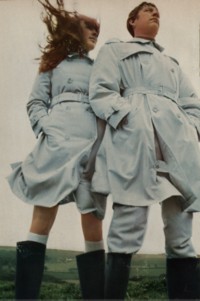

Established by Thomas Burberry in 1856, Burberry combines our founder’s passion for the outdoors with modern British design.
As a 21-year-old former draper’s apprentice, Thomas Burberry noticed that people struggled with heavy, uncomfortable outerwear when braving the British weather. He had a vision – to create a breathable fabric that would enable people to move freely. Twenty-three years after founding Burberry, Thomas achieved his vision with the revolutionary invention of gabardine in 1879.
Continuously pushing creative boundaries, Burberry innovated to protect explorers and pioneers. In 1893, Dr Fridtjof Nansen, a Norwegian polar explorer, zoologist and Nobel Peace Prize laureate, became the first recorded polar explorer to wear and utilise Burberry’s innovative fabrics in the Arctic Circle. This pioneering spirit continued when in the early 20th century, acclaimed British Explorer Sir Ernest Shackleton wore Burberry gabardine for three expeditions.
This legacy of exploration keeps outdoor inspiration at the forefront of our designs. Our house signatures, from the trench coat and Burberry Check to the Equestrian Knight Design, reflect this adventurous heritage.